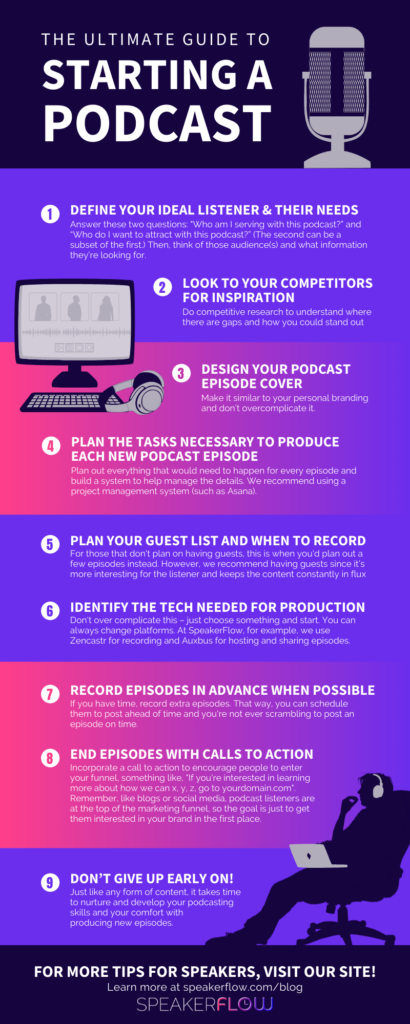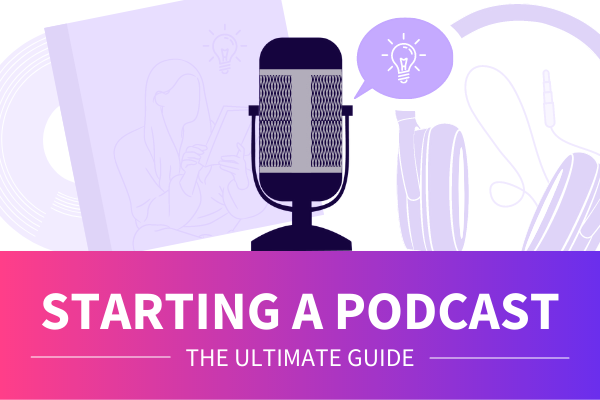Welcome to the era of podcasts! With more people turning into podcasts than ever before, now is the best time to start your own podcast. Even though starting a podcast requires relatively little equipment and know-how, there are still things you need to know in order to launch.
Luckily, you’re in the right place. Though there are over 850,000 active podcasts. This number might sound intimidating, but it’s shockingly low compared to the number of blogs, social media accounts, and so on. This means it’s easier to stand out and be heard as a podcaster than on other platforms.
Audio content is more convenient for everyday listeners than ever before. Many people don’t have the time to check in with your blog regularly, but a podcast is something that fits naturally into their daily routines. You can build an audience, create additional income opportunities, and position yourself as a thought leader in your space. Plus, because your audience hears your voice, it’s more personal. It’s like having a direct line of communication with your biggest supporters.
If you have passion and expertise, starting a podcast might be right for you. No matter what type of podcast you create, there’s a space for you to be heard. Ready to take that next step? Here’s the ultimate guide to starting a podcast. Our expert advice makes it easy to start your podcast off right, no matter your experience level.🎙️
- Define your ideal listener and what they need to hear.
- Look to your competitors for inspiration.
- Design your podcast episode cover and branding.
- Plan the tasks necessary to produce a podcast episode.
- Plan your guest list and when you’ll meet to record.
- Identify the tech necessary to produce your podcast.
- Record episodes in advance when possible.
- End each episode with a call to action
- Don’t give up early in the process!
Define your ideal listener and what they need to hear.
First, you need to do some planning. While it’s tempting to jump right in by recording your first episode, a bit of preparation goes a long way. You want to make sure you answer these key questions before you begin:
- Who am I serving with this podcast?
- Who do I want to attract with this podcast?
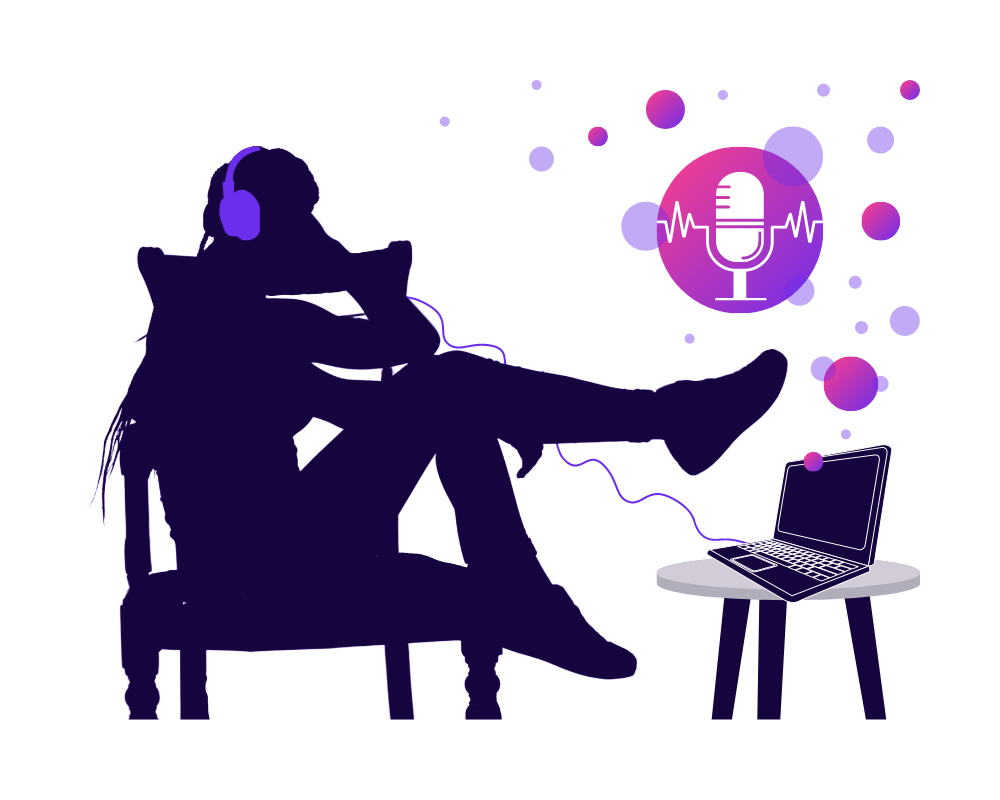
From there, think of your audience. What information are they looking for? Your podcast should be focused on a particular niche or audience. There aren’t many podcasts about everything and with good reason. Most people don’t want to listen to someone rambling about their thoughts unless there’s some kind of point.
Instead, narrow your interests and expertise down to a specific niche. Consider what topic you could talk about for many episodes (50+). This shouldn’t be so broad that it can’t appeal to your audience. You might choose to expand to similar areas later on, but you should clearly define your ideal listener and the content they want to hear.
For example, if you’re a marketing expert, you might choose to narrow down your niche specifically to video marketing. You can create endless topics around the umbrella of video marketing, so this is the perfect example of a niche that works for a podcast. Not sure where to begin? What gets you excited? What topics can you go on forever about? This is where your passion lies, so find your niche there.
Pro tip: To make sure you have enough ideas under your niche umbrella, brainstorm a few right off the bat. If you’re struggling to come up with a full list (10+), this might be too narrow of a niche or not the right fit for you.
Look to your competitors for inspiration.
Next, look to your competitors. While you don’t ever want to copy someone else, you shouldn’t be afraid to find inspiration around you. Do competitive research to understand where there might be gaps in your industry already. This is a great opportunity to stand out.
For example, at SpeakerFlow, we have a super casual, radio-style show featuring two hosts and one guest. In the speaking industry, we’re the only podcast that uses a casual format like this. Because we stand out, we don’t get lost in the sea of speaking-focused podcasts. Just like when you’re releasing a new product or service, it’s essential to do some market research. You wouldn’t release something without knowing there was a demand for it in the first place, right?
Competitive Research Checklist
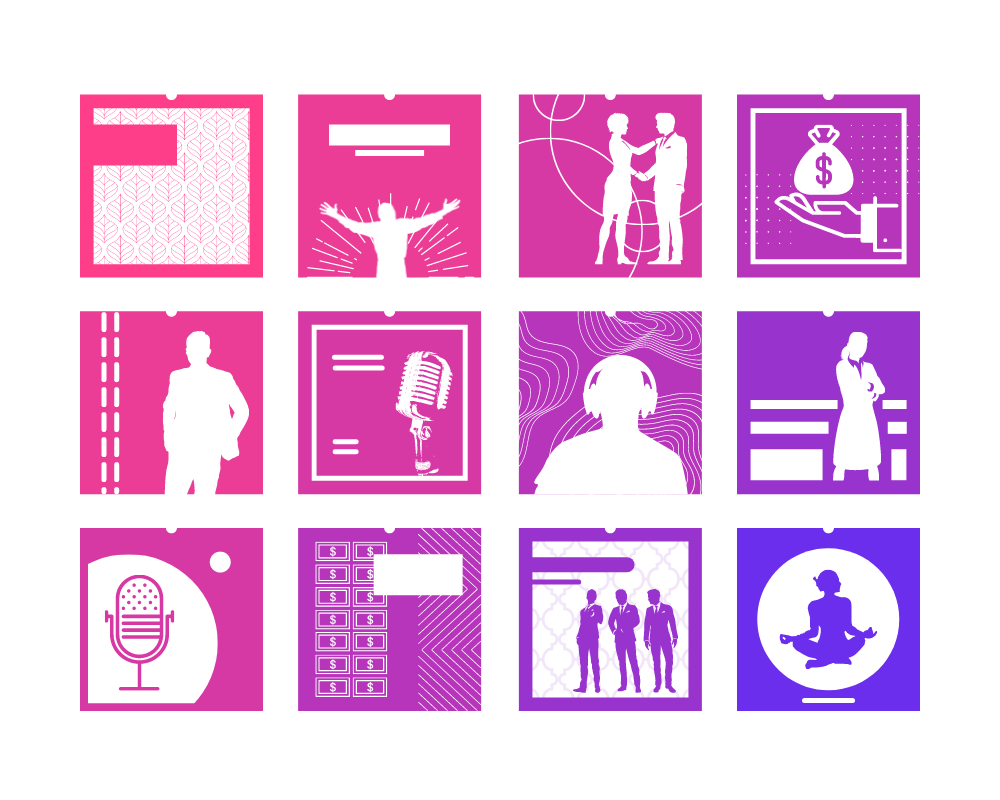
Not sure where to begin? It doesn’t have to be complicated. Follow these market research steps below to size up your competition in an actionable way:
- Competitors: First, identify who your main competitors are. You can do this in any podcast directory by searching main keywords. For instance, you could search “video marketing” if we use the same example as before. This will help us find the top-rated podcasts in that niche.
- Check their content: From there, listen to a few episodes and read descriptions. What’s effective about their content? What could they do better?
- Marketing: Next, consider how these podcasts are marketing to their audience. Are they posting on social media, do they have a newsletter, or are they paying for ads? This is good to know when making your own strategy.
- Reach: Are these podcasts well-connected? Do they collaborate with others in the space, and do they appear like real thought leaders?
- Reviews: Lastly, read through competitors’ podcast reviews. You’ll learn their strengths, weaknesses, and areas you can shine through.
Pro tip: Identify 3-4 podcasts in your niche that are doing a great job. After listening to a few episodes, decide what makes their podcasts successful and what you could do better yourself. Are there any topics you could dive into deeper? Or are there any new perspectives you could bring into the discussion?
Design your podcast episode cover and branding.
Third, it’s time to create branding elements. Because your podcast is an extension of you, it should also be branded similar to any existing website, blog, and social pages. By creating a clear, consistent voice, you develop an identity that’s easy to recognize.
While you should make your podcast branding similar to your personal branding, don’t overcomplicate it. When it comes to your podcast branding, less is more. The key things you need to get started are cover art, a logo, and intro music. Your cover art, in particular, is the first impression of your podcast. A reported 62% of new listeners are more likely to listen to a podcast if they like the cover art.
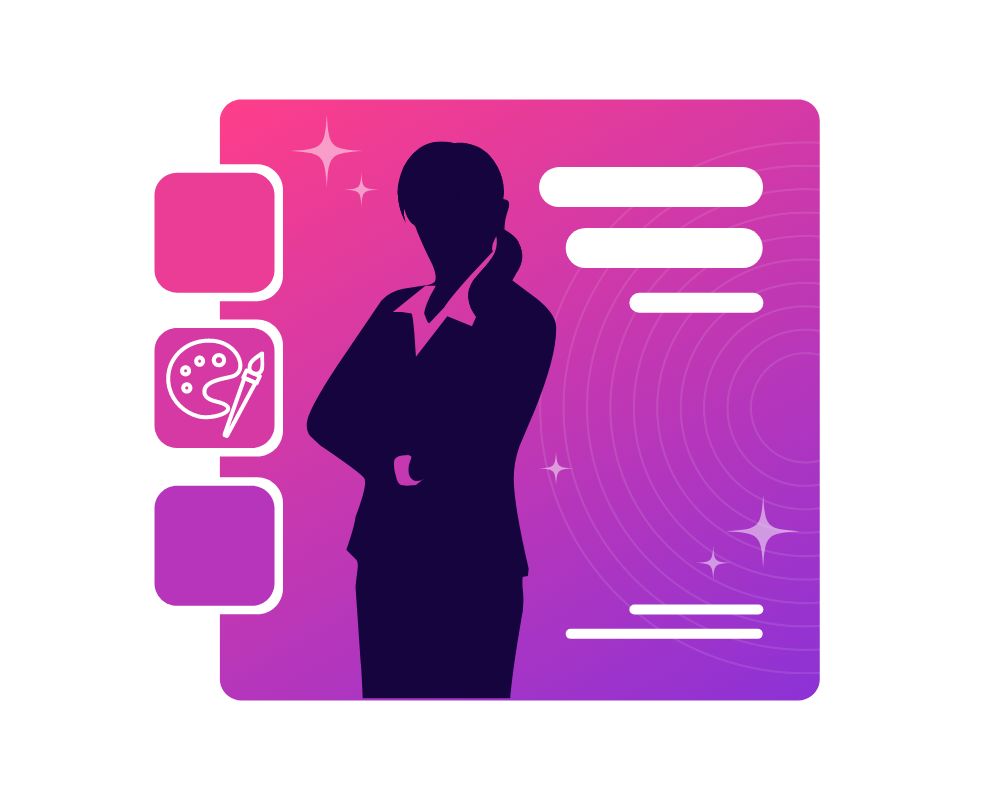
When designing your branding, pay close attention to the requirements of podcast platforms. For instance, Apple Podcasts requires your resolution to be 3000 x 3000px. Designing your podcast cover art in multiple sizes will make promoting easier later on. You can use a tool like Canva, Photoshop, or hire a professional for your podcast branding.
Lastly, steer clear of imagery that’s overdone. Things like microphones, pop filters, and headstones are overdone. It’s similar to putting a picture of a camera on a movie poster—it’s unnecessary. Instead, stay consistent with your branding and use your colors and imagery to your advantage.
Pro tip: Your podcast cover art and branding should make it clear your niche and topic within seconds. This is your first impression to listeners, so make it count. Consider testing a few different cover art options to see what gets the most listens.
Plan the tasks necessary to produce a podcast episode.
Fourth, you’ll soon discover that producing podcast episodes is about much more than recording. There are a lot of steps that go into creating each episode, and these can get overwhelming if you’re not careful. We highly recommend planning out everything in advance so you have a built-in system from the start.
At SpeakerFlow, we use the project management tool Asana to automate our production tasks. While each podcast might have its own steps, feel free to copy our process. Here’s what we include in our production system:
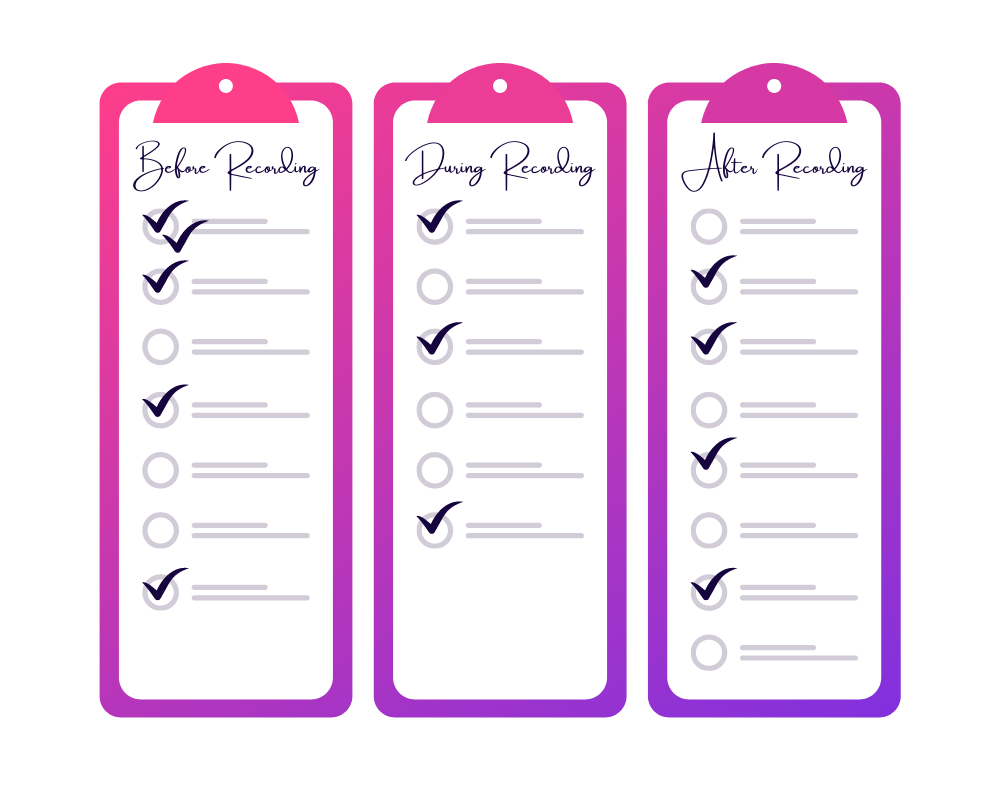
- Plan episode outline and interview questions (if joined by a guest)
- Send an email saying “Thank you” and “Who else would you recommend to be on the show?”
- Write episode title, description, and show notes
- Make video thumbnail, podcast episode cover, and featured image
- Commission MP3 + Video
- Commission transcription
- Schedule episode to your podcasting platform of choice and YouTube
- Schedule to your website
- Push website post live
- Send email to your guest after it’s live and share the URL from your site
When these are built into your process, it’s much easier to keep track of everything. As you become more comfortable with podcasting, they’ll feel like second nature. You can create templates for guest emails, website posts, and more. It’s all about working smarter, not harder, but don’t let the small things get left behind.
Pro tip: Learn as you go, adjusting your strategy to meet your newest challenges. This is also a great opportunity to outsource tasks to an assistant or professional podcast manager.
Plan your guest list and when you’ll meet to record.
Next, it’s time to plan your guest list. Alternatively, if you don’t plan to have guests, you can take this time to plan out a few episodes instead. Guests are a great option if you want to create something engaging for the listener, but it’s up to you and the style of your show.
You can use a tool like PodMatch to find guests for your show, or you can create your own list off the top of your head. Consider those in your space who you think would be a good fit for your audience. Bonus points if you already have a connection to them. Once you feel comfortable, reach out.
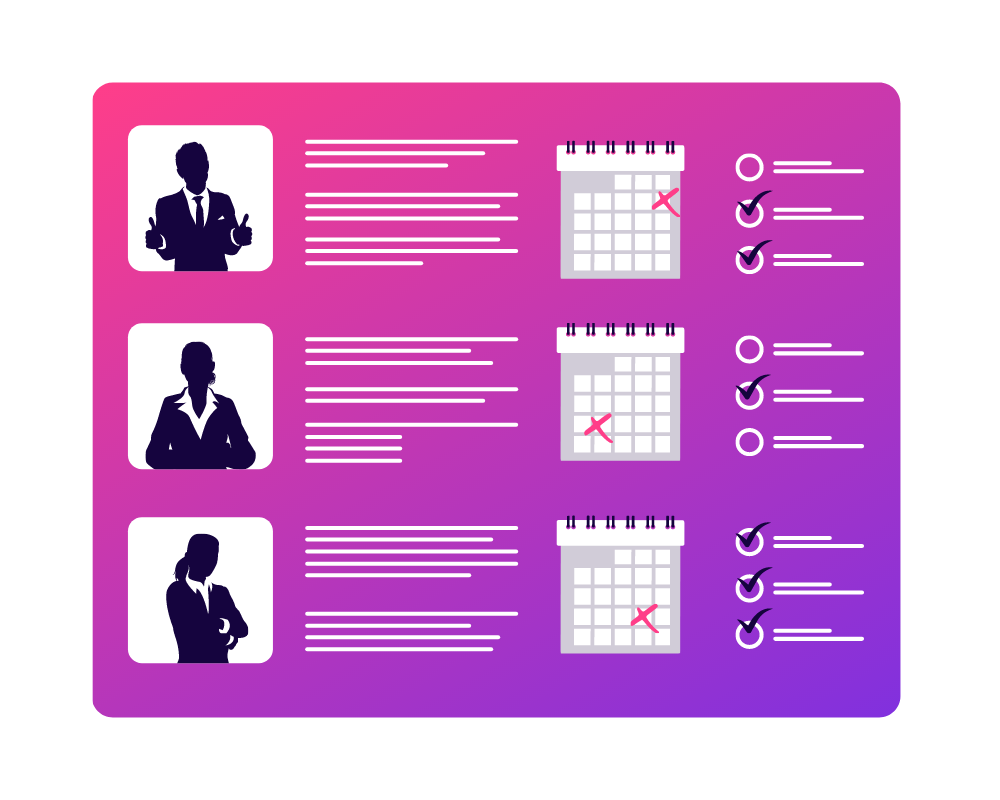
You’d be surprised how many people are excited to get invited to speak on podcasts. It’s a compliment to their expertise, and it’s an opportunity for them to promote themselves. When sending a guest an invite, it’s a good idea to recommend a few topic suggestions to do the planning for them.
When you have guests who have agreed to record, it’s time to find a time that works for both of you. A tool like Calendy makes it easy to plan these things without the back-and-forth emails. By setting interview times in your calendar, your guests can select the time/date that works best for them. Lastly, follow up with your guests before the recording to make sure they’re ready and know what to expect. It’s normal for them to have some nerves before going on air, especially if they’re new to podcasting.
Pro tip: To find guests who are likely to jump at the opportunity to speak on a podcast, look for people in your space with new products, services, or content. By letting them briefly promote these tools in exchange for being a guest, many are more than willing to help (even if your podcast is brand new).
Identify the tech necessary to produce your podcast.
Now, we need to take a moment to discuss the technical stuff. While you don’t need to splurge on expensive equipment when you’re first getting started, you do need some basics. Contrary to popular belief, you don’t need fancy, studio-grade equipment to start your podcast. Consistency and content are far more important.
Here’s what you really need when starting a podcast:
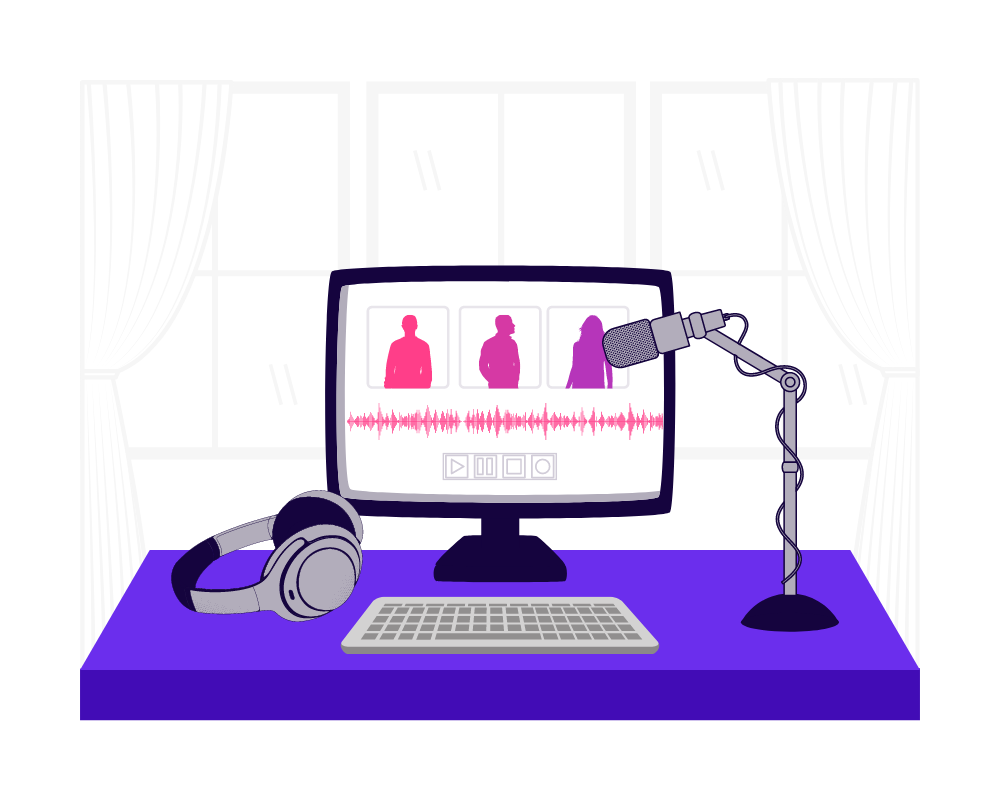
- Hosting: Your show needs to be hosted somewhere online for podcast platforms to syndicate it. Our recommendation is Libsyn Studio, but there are many other options, such as Buzzsprout. Don’t over-complicate your decision—you can always switch later.
- Recording: You can record your podcast directly from your computer or smart device, but it’s helpful to have an audio or video recording tool like Zencastr.
- Microphone: Of course, you need a microphone. Your computer or smartphone likely comes with its own built-in mic, but this isn’t usually the best quality. An inexpensive microphone ($30 – $50) and pop filter are more than enough when just getting started.
- Headphones: If you’re recording, you need a pair of headphones to hear your guests and yourself without outside noises getting in the way. Again, these don’t have to be expensive.
- Quiet space: Though you might not think about it, you definitely need a quiet place to record your podcast. This should be a space that’s free of echo, outside noises, or feedback.
- Editing software: Lastly, you need somewhere to edit your podcast. Many of these are free, like Garageband or Audacity.
It’s easy to get caught in the details of the “best” products or tools, but don’t let that hold you back. It’s always better to get started than to have the absolute best things right away. Remember, you can always upgrade later. In fact, expensive equipment could hold you back by being too complicated or time-consuming.
Pro-tip: Your office or home can make the perfect podcast studio with a bit of tweaking. Choose a small, carpeted room (like a closet) to create your own mini-sound booth. Alternatively, you can purchase an inexpensive recording shield box.
Record episodes in advance when possible.
With that in mind, have you ever heard of “podfading?” This is when you start a podcast, but then you lack the momentum to keep it going long-term. Slowly but surely, the podcast fades into obscurity, never to be listened to again. It’s estimated that more than half of the podcasts started will fade within two years.
How do you combat the dreaded “podfading” phenomenon? Preparation, preparation, and more preparation. When you record episodes in advance, you’re always ahead of your posting schedule. The majority of podcasts fail because they lack preparation, clear organization, and long-term commitment from the start.
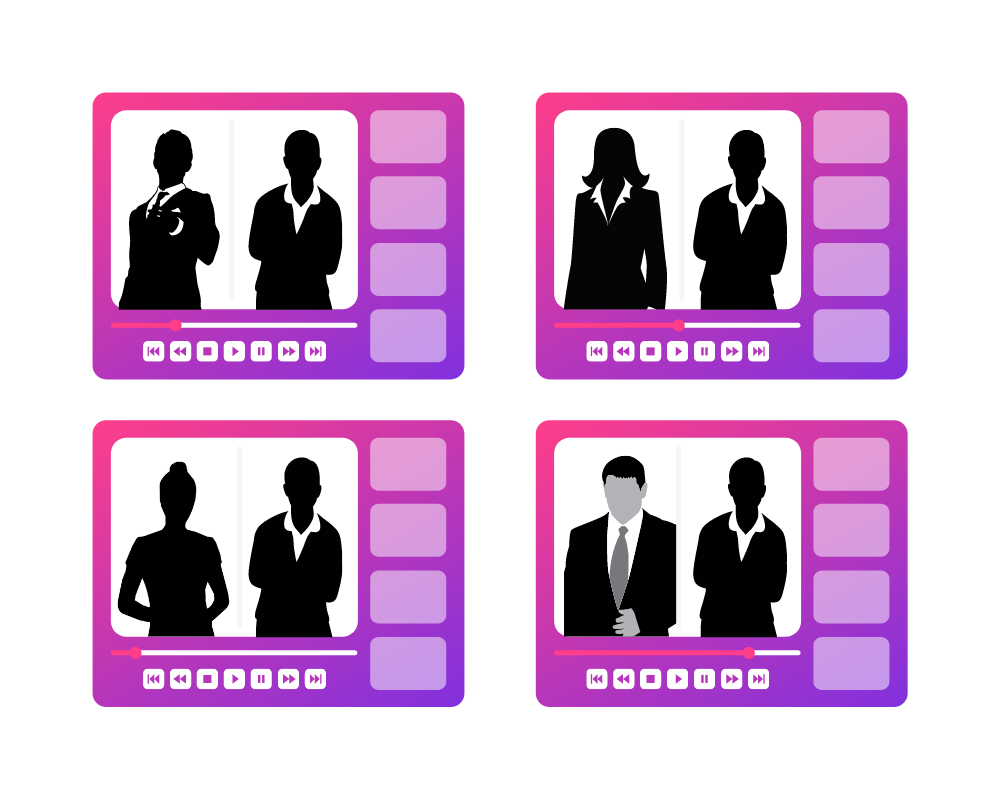
As soon as you fall behind, it’s easy to lose motivation to keep pushing forward. This is especially true when your podcast is new and still doesn’t have a large listener base. When you’re getting started, understand that podcasting is often a bigger time commitment than you expect. At SpeakerFlow, we build time for this into our schedule. For example, we always record on Fridays, and we record multiple episodes at once.
While this might seem like overkill, it makes all the difference. We can bulk schedule weeks in advance, meaning we’re never scrambling to post an episode on time. When it comes to starting a podcast, consistency really is key. With 38% of podcast listeners listening regularly each month, you want to make sure there’s always fresh content to look forward to. It’s always important to be a bit ahead if you can. This is especially true in the beginning.
Pro tip: Because a lot of preparation goes into each episode, set a specific time of the month aside for recording, a time for editing, and for scheduling marketing materials. Doing everything at once is a one-way road to burnout.
End each episode with a call to action
Next, your podcast episodes should have more than substance. If you’re trying to position yourself as a thought leader, you need to make a memorable impact. You don’t want your users to finish listening and then never think of you again. Instead, you want them to take real action.
By incorporating a call to action in each episode, you encourage listeners to become leads. Your podcast (like other social channels) is on the top of your marketing funnel. Your goal is to get them engaged in your brand, interested in taking some form of next step. While they’re unlikely to be ready to make a big purchase, they should be interested in your brand.
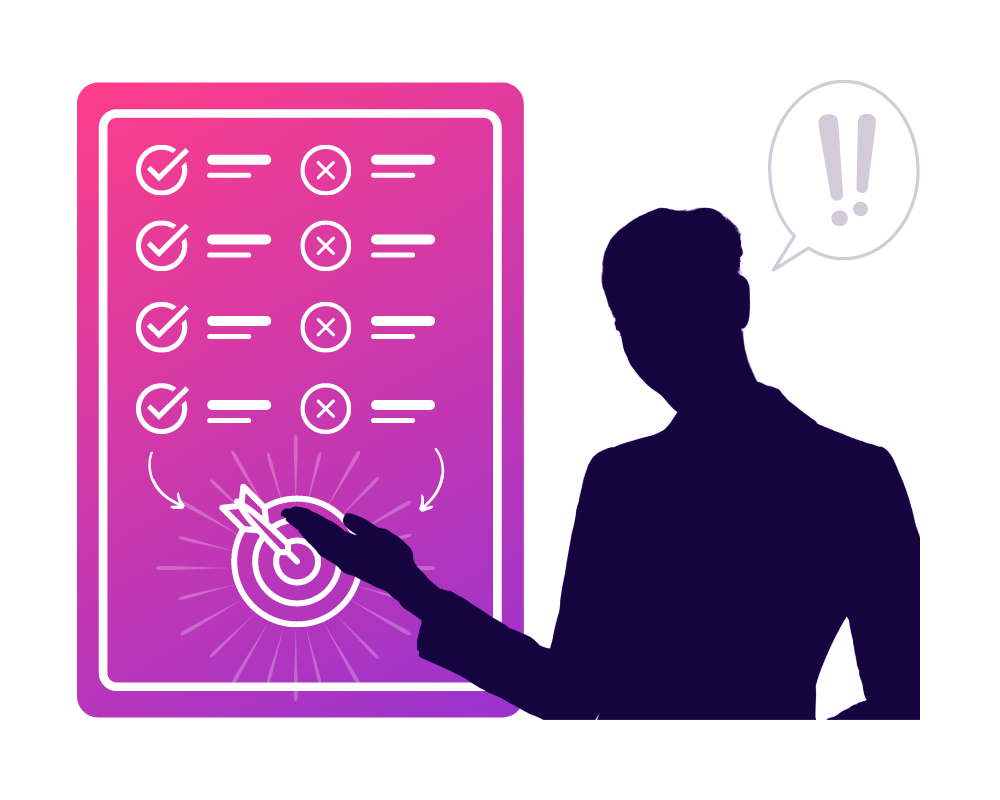
There are a lot of actions you can ask listeners to take:
- Read your show notes for a freebie or special landing page link
- Follow you on social media
- Head to your blog for more information on this topic
- Subscribe to your email list
- Learn more about a product/service
This doesn’t have to be complicated. For example, something like this is more than enough: “If you’re interested in learning more about marketing your newest product, go to yourdomain.com to read more.” You want to capture their attention in the first place and build from there.
Lastly, how often should you include a call to action in your podcast? Every. Single. Episode. It might feel weird repeating a call to action at the end of each episode, but it’s a must. Not every listener will listen to each episode. You might miss making an important connection because you skip your call to action in a specific audience. You can include your CTA in an editing template that’s pre-recorded, or you can make a fresh one each time.
Pro tip: Consider your goals before recording each podcast episode. What are you trying to achieve, and how can your call to action bring users closer to your goals? By keeping this in mind, you ensure your CTA doesn’t go to waste.
Don’t give up early in the process!
Finally, don’t give up. Podcasting isn’t always easy. It’s incredibly rare to have overnight success, so don’t go in expecting instant gratification. Slow and steady wins the race. Because there are more podcasts right now than ever before, it’s normal to take some time to carve out an audience in your niche.

What wins at the end of the day? Consistency. Like with any form of content, it takes time to nurture your project and build your skills. Your comfort level grows with each episode, and soon it feels like double nature. As you can see from the guide to starting a podcast above, there’s a lot that goes into creating successful episodes. From having the right tools to making the best publication schedule, it’s okay to learn as you go.
Listeners and monetization are important, but that’s not what makes or breaks a podcast. It’s all about consistency and staying true to your passion. If you’re authentic with your audience, your listeners come naturally. Like any part of your brand, it might take some time to develop your voice and who you’re talking to. Just don’t give up, especially not right away. It can take weeks or even months to find the right stride.
Need more podcast inspiration? Listen and subscribe to SpeakerFlow’s Technically Speaking. This is a podcast by experts in the speaking industry designed for anyone striving to take their business to the next level, no matter where you’re at. From there, the next steps for starting a podcast are entirely yours to take.
